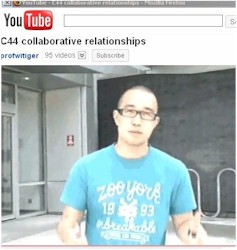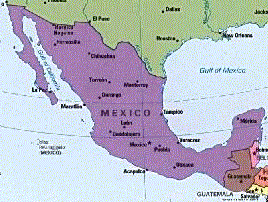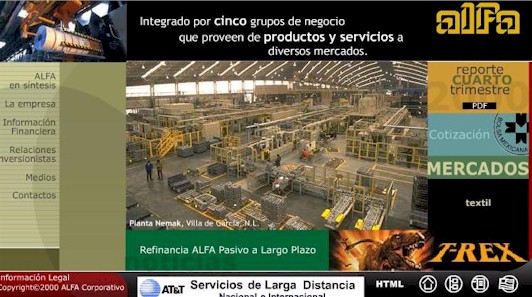Arrangements

o Turnkey Operations
o Licensing Technology
o Joint Venture
- Co-op Joint Venture
- Equity Joint Venture
- Strategic Alliances
- Equity Alliances
o Consortiums
o Franchising
o Contract Manufacturing
| Collaborative
Arrangements |
 |
|
|
o Management Contracts
o Turnkey Operations o Licensing Technology o Joint Venture - Co-op Joint Venture - Equity Joint Venture |
o Alliances
- Strategic Alliances - Equity Alliances o Consortiums o Franchising o Contract Manufacturing |
 |
This web page has many audio clips - just click on the icon (like the one to the left) and you can hear Prof. Richardson's voice adding additional information to topics on the page. |  |
turn on your speakers to hear audio clips |
 |
In 2009, Kenway Du and friends
put together a very humourous video that actually explains well the various
forms of Collaborative Relationships - they got a big pile of class participation
marks for doing this, and my respect for coming up with an innovative way
to explain something that was important for students to understand.
Video
|
| INTRODUCTION | In the Unit
"Why
Companies Export: Reasons for going International" we looked at whether
it is best to be Proactive or Reactive.
Now, we will take a closer look at the various types of arrangements that can be created to allow a company to be international. Almost all of the ways that a company does business overseas involves some collaboration. Experience has shown that it is less expensive and more productive to have some degree of co-operation with companies and government in the host country. The purpose of this section is to introduce the student to the nature of the relationships in which companies engage, to achieve their corporate objectives. The following points will be discussed in the lecture Why companies enter foreign
|
|
|
or, subtitled "reasons why companies get involved in complicated ways with other companies"
.
| Motives
for
Collaborative Relationships  |
specialize
in competencies
|
| Motives
for
Collaborative Relationships  |
gain
market knowledge
|
| Motives
for
Collaborative Relationships  |
diversify geographically |
|
Regarding
the list to the left, some of these ways involve collaboration, some do
not.
The majority of the "Ways to get involved in Intl Business" involve co-operation and collaboration in our increasingly competitive and "globalized" world. Below, we have a closer
look at the situations that involve collaborative arrangements
|
Modes of entry that involve Collaborative Arrangements
| Collaborative
Relationships |
Types of collaborative
relationships
Indirect Exporting
military analyst Richard Fisher explains that "the Z-10 attack helicopters is just one major military program, amongst hundreds, that China is pursuing in order to prepare for a possible war against Taiwan". CBC says "Under U.S. arms
trafficking laws, Washington must give its approval for U.S. products and
technology to be used for military purposes in a third country."
|
| Collaborative
Relationships Collaborative
|
Types of collaborative
relationships
Licensing
|
| Collaborative
Relationships |
Franchising
|
|
Collaborative Relationships Collaborative
|
Contract
Manufacturing
|
| Collaborative
Relationships Collaborative
|
Management
Contracts
|
| Collaborative
Relationships Collaborative
|
Joint
Ventures
|
| Collaborative
Relationships Collaborative
|
Alliances
|
| Collaborative
Relationships Collaborative
|
Consortiums
|
| Collaborative
Relationships Collaborative
|
Consortiums
Jessica emailed Prof. Richardson
and said "..While studying for the test, I Google'd
some examples of a consortium and I came across the Open Interconnect Consortium
(OIC) ( openinterconnect.org
)between Intel, Dell,
Samsung and others. They are basically trying to connect all devices, such
as computers, toasters, sensors, cars, to the Internet, which will let
people to control the objects and let the objects communicate between each
other. Could you imagine starting your oven at a touch of a button from
your car? Not sure if this is the
WTGR replies."I think this is an interesting concept, but the premise of "Connectivity across multiple operating systems" may go against some of the monopoly situations that some hardware and software companies have been trying to leverage - so some of the super big companies might not co-operate" |
| Collaborative
Relationships Collaborative
|
Consortiums
Bhavana emailed Prof. Richardson
and said "..i found an interesting article on the
internet today about constoriums and Toys R Us. I know we were talking
about them in class yesterday so I thought you might want to read the article
and/or add it to your website as and example
of a consortium."
While this story did not explain the reason why this consortium bought Toys 'R' Us, there are a number of plausible guesses - they may be speculating on the chance they can sell the inventory at mark-down prices and make a tiny profit, they might want to split the company up into several divisions and sell them off to competitors in the toy business, or maybe some analyst has calculated that the real estate owned by the 681 stores could be valuable sold off to developers. |
|
Grupo Industrial Alfa S.A. (A.K.A. Alfa) |
| Grupo Industrial Alfa
S.A. (A.K.A. Alfa)
One of Latin America's largest companies
|
 |
Alfa shows that companies can use several types of collaborative strategies to exploit int'l opportunities.

Shaw,
an American company, is the world's largest carpet maker

Terza (a Shaw, Alfa JV) is the largest producer of carpets and rugs in Mexico and Latin America.  |
Checks with some search
engines turns up several other descriptions of collaborative strategies
that Alfa has
Alfa also has a relationship
with a U.S. rug mfg.
"In addition to its U.S. operations, Shaw Industries maintains a manufacturing presence in Mexico. In June 1994, in conjunction with Grupo Industrial Alfa, S.A.de C.V., Shaw Industries established a joint venture for the manufacture and marketing of carpets, rugs, and related products in Mexico, known as Tenedora Terza, S.A.de C.V." So, sometimes Alfa makes
an alliance for its strategic purposes, and sometimes, as in the case of
Shaw, it ends up in an alliance because it is sought out by a company looking
for a strong local partner. The relationship not only benefited Alfa, but
also turned Shaw into the largest carpet maker in the world.
|
|
|
CONTACT I MAIN PAGE I NEWS GALLERY I E-BIZ SHORTCUTS I INT'L BIZ SHORTCUTS I MKTG&BUSINESS SHORTCUTS I TEACHING SCHEDULE |
| . | |
| MISTAKES ITEXTS USED I IMAGES I RANK IDISCLAIMER I STUDENT CONTRIBUTORS I FORMER STUDENTS I | |
| . |
Prof. W. Tim G.
Richardson © www.witiger.com ![]()